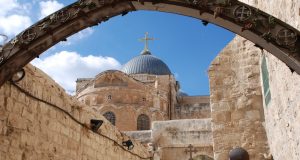
Ten years on, the terrible events of Sunday, April 28 1996, when a lone gunman killed 35 people at Port Arthur, Tasmania still numb the feelings of many Australians.
At the time waves of disbelief and grief washed over the peaceful and tranquil holiday isle of Tasmania.
Dr Christine Gapes former faculty member of United Theological College, Australian Catholic University, Charles Sturt University and Trinity Theological College tells how all through that long Sunday she was riveted to the television as the drama unfolded.
With twenty years of research interest in adolescent bereavement and the theology of youth ministry Dr Gapes flew into Launceston the next day to visit
"As I went through the airport security I looked warily at men with blond hair who carried dark sport bags as it was reputed that the killer had carried his deadly weapons in such a bag," she said.
"I sat with friends in Tasmania and sipped the sour taste of anger and grief as people in that beautiful island came to terms with a tragedy that had ripped apart their sense of security and peace."
Just two months after the shootings Dr Gapes conducted research in two high schools in Tasmania, one in the north of the state and one in the south, near Hobart which is one hour’s drive from Port Arthur.
Dr Gapes invited the students to express their reactions in drawing and through questionnaires.
"My primary question was ‘What could I learn about adolescents’ grief reactions to the violent deaths at Port Arthur?’ but my mind continually wandered to the pictures and I began to notice hints of the students’ understanding of what it means to be human and their sense of evil.
"I pondered their drawings and descriptions from a theological perspective and was amazed at the richness of their illustrations of human nature, evil, and the absence or presence of God in traumatic times.
After carrying these pictures in her heart for ten years Dr Gapes has collected them into a e-book called The Day was Long: Reflections on the Tragedy of Port Arthur where she has juxtaposed the students’ drawings and comments with some interpretation and a passage from the Psalms
"One Year 10 student from the southern school carefully drew an exquisite depiction of rounded drops of blood and tears falling into a grey sea-cloud of grief.
"She captured the waves of grief that wash over bereaved people as they are flooded with tears of sorrow.
"She said, ‘I have drawn a picture of tear drops and blood drops all dripping into the one heavenly cloud. I drew this because whenever I hear about the Port Arthur Massacre I think of the song Tears in Heaven. I don’t know why though’."
Dr Gapes explained that the song which was sung at the Memorial Assembly held by this girl’s school was emotionally moving for many students and the tears may represent a symbolic image of God.
"The drawing evokes Hildegarde de Bingen’s image of God as the passionate tear and biblical passages which reflect the deep compassion of God for those who are lost through terrible death and evil," said Dr Gapes.
The theological question for Dr Gapes is how we enable young people to respond to pain in the world and move beyond their immediate response.
"Children and adolescents need a circle of love and strength to help them navigate the uncertain, and the church needs to help them explore the dark moments of life and themes of evil and redemption.
Dr Gape’s e-book The Day was Long: Reflections on the Tragedy of Port Arthur is available for download HERE (pdf 2mb) and a copy of her paper Severed Connections which was originally posted on the Digital Orthodoxy web site http://www.digitalorthodoxy.com by can be downloaded HERE (pdf 2mb).
Photo : The tears of God
 JourneyOnline
JourneyOnline






